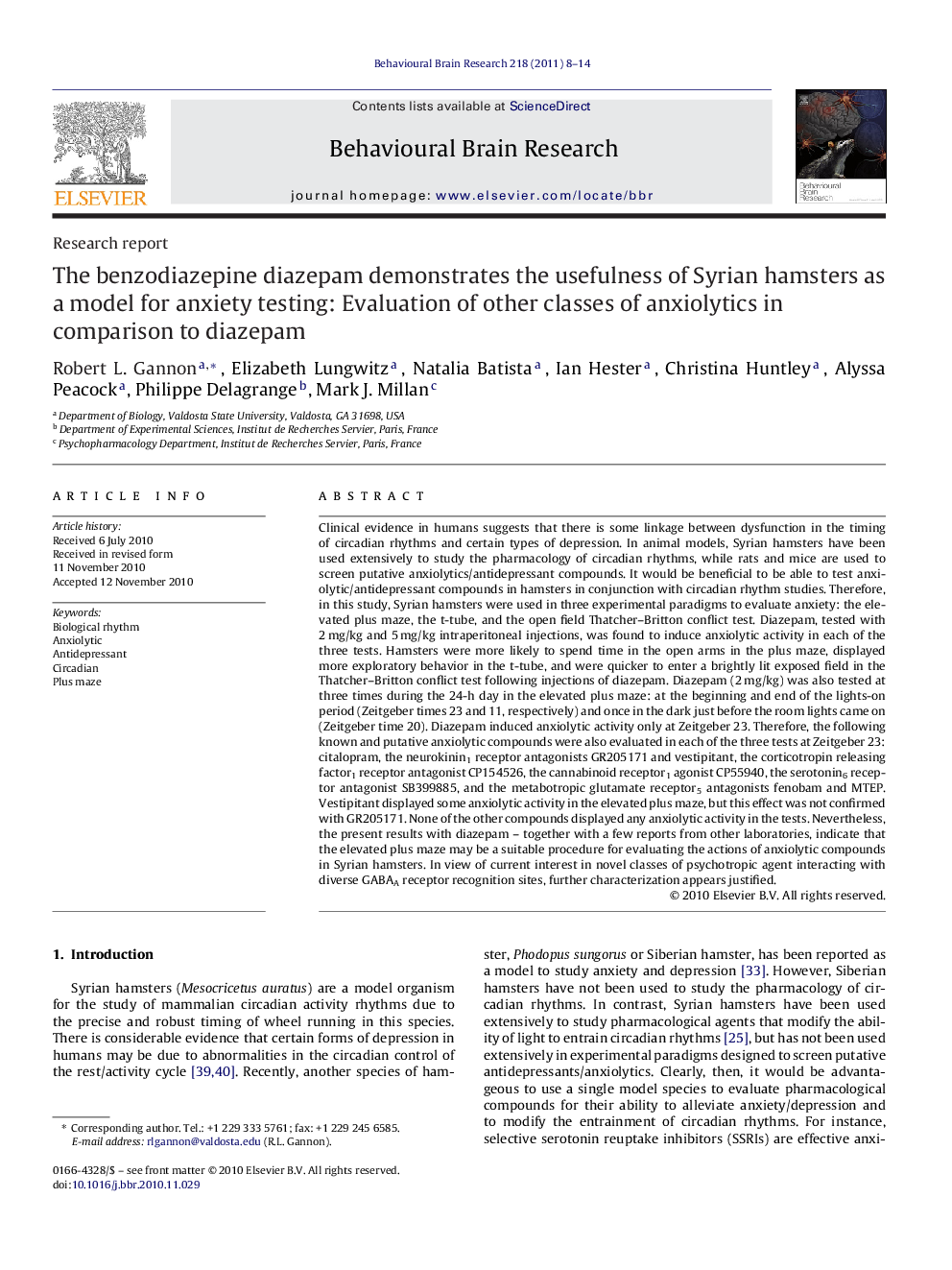| کد مقاله | کد نشریه | سال انتشار | مقاله انگلیسی | نسخه تمام متن |
|---|---|---|---|---|
| 6259878 | 1290012 | 2011 | 7 صفحه PDF | دانلود رایگان |

Clinical evidence in humans suggests that there is some linkage between dysfunction in the timing of circadian rhythms and certain types of depression. In animal models, Syrian hamsters have been used extensively to study the pharmacology of circadian rhythms, while rats and mice are used to screen putative anxiolytics/antidepressant compounds. It would be beneficial to be able to test anxiolytic/antidepressant compounds in hamsters in conjunction with circadian rhythm studies. Therefore, in this study, Syrian hamsters were used in three experimental paradigms to evaluate anxiety: the elevated plus maze, the t-tube, and the open field Thatcher-Britton conflict test. Diazepam, tested with 2Â mg/kg and 5Â mg/kg intraperitoneal injections, was found to induce anxiolytic activity in each of the three tests. Hamsters were more likely to spend time in the open arms in the plus maze, displayed more exploratory behavior in the t-tube, and were quicker to enter a brightly lit exposed field in the Thatcher-Britton conflict test following injections of diazepam. Diazepam (2Â mg/kg) was also tested at three times during the 24-h day in the elevated plus maze: at the beginning and end of the lights-on period (Zeitgeber times 23 and 11, respectively) and once in the dark just before the room lights came on (Zeitgeber time 20). Diazepam induced anxiolytic activity only at Zeitgeber 23. Therefore, the following known and putative anxiolytic compounds were also evaluated in each of the three tests at Zeitgeber 23: citalopram, the neurokinin1 receptor antagonists GR205171 and vestipitant, the corticotropin releasing factor1 receptor antagonist CP154526, the cannabinoid receptor1 agonist CP55940, the serotonin6 receptor antagonist SB399885, and the metabotropic glutamate receptor5 antagonists fenobam and MTEP. Vestipitant displayed some anxiolytic activity in the elevated plus maze, but this effect was not confirmed with GR205171. None of the other compounds displayed any anxiolytic activity in the tests. Nevertheless, the present results with diazepam - together with a few reports from other laboratories, indicate that the elevated plus maze may be a suitable procedure for evaluating the actions of anxiolytic compounds in Syrian hamsters. In view of current interest in novel classes of psychotropic agent interacting with diverse GABAA receptor recognition sites, further characterization appears justified.
Research highlightsⶠDiazepam expressed anxiolytic activity in the hamster using the elevated plus maze. ⶠDiazepam was only effective when tested during lights-on periods. ⶠHamsters spent more time in the open arms of the plus maze during darkness. ⶠVestipitant also demonstrated anxiolytic activity in the plus maze.
Journal: Behavioural Brain Research - Volume 218, Issue 1, 17 March 2011, Pages 8-14